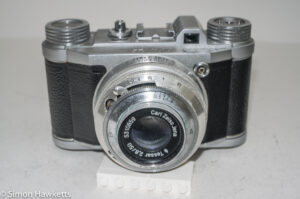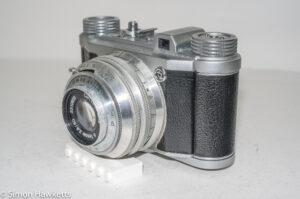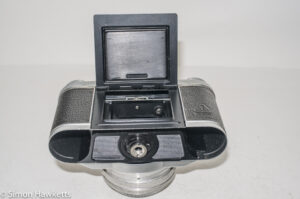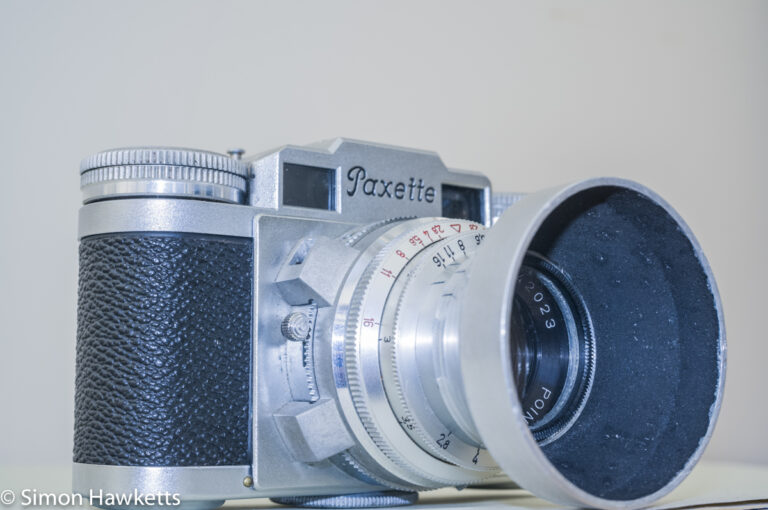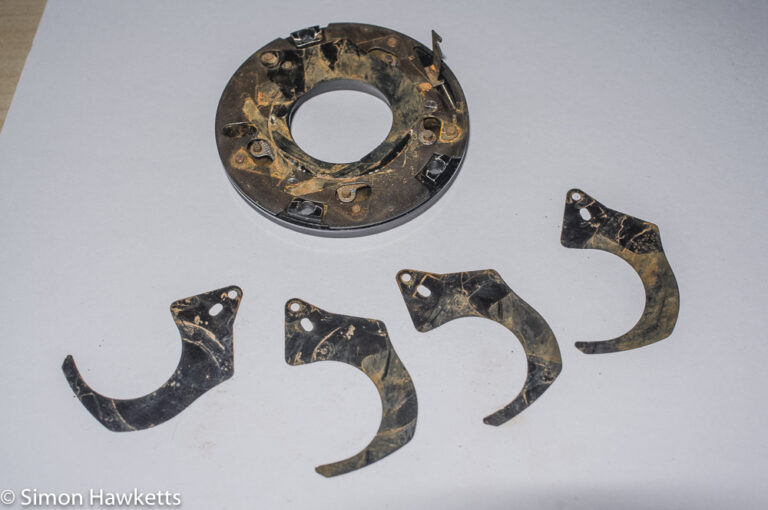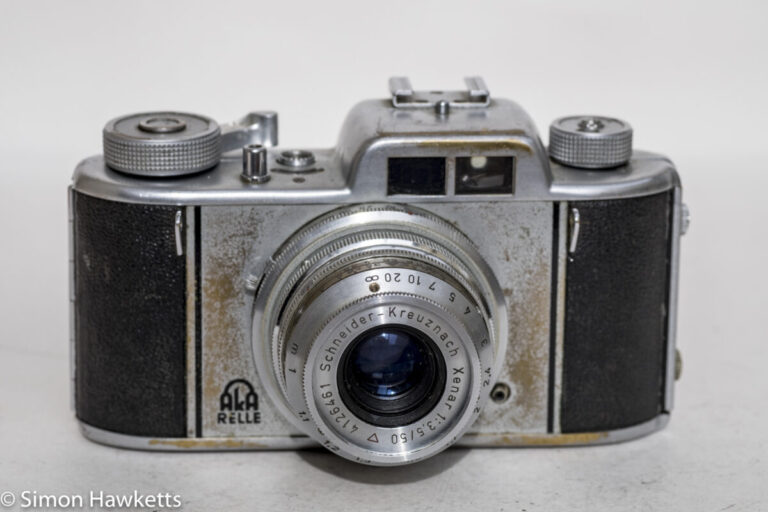Altissa Altix IV 35mm viewfinder camera
The Altissa Altix IV is an interesting 35 mm viewfinder camera which was made in Germany in the early 1950s. It is a non-interchangeable lens camera with a manually cocked shutter and a Carl Zeiss Jena Tessar lens, and has a novel film loading mechanism.
My Altissa Altix IV Camera
I bought this camera from eBay because I hadn’t seen the model before, and it looked an attractive and interesting camera. It was described as being non-working because ‘the shutter button is locked’, but I did a bit of research before I bought it and determined that the most likely problem was that the camera needs film loaded in order to cock the shutter.
When the camera turned up a week or so after purchase, I found that the shutter button was indeed locked because the shutter was cocked but not fired, but after opening the camera and winding the film sprocket the shutter release button unlocked and fired. Using this technique I could test all the speeds and found that the shutter is fine and working at all speeds.
Most of the other controls also seem to be working well without any stiffness or sloppiness, but the focus control does have a slightly grating feel as it gets to the closest focus point. It’s likely that the grease in the helicoid is in need of replacement, but I’m not sure if I’ll bother with that since everything is basically working. It could lead to more problems than it’s worth, taking the lens assembly apart.
Apart from some light corrosion on the aluminium of the shutter and aperture dials, the cosmetic condition of the camera seems pretty good. There are no major scratches or dents as far as I can see, and the only work really necessary is a good clean.
Pictures of the Altissa Altix IV
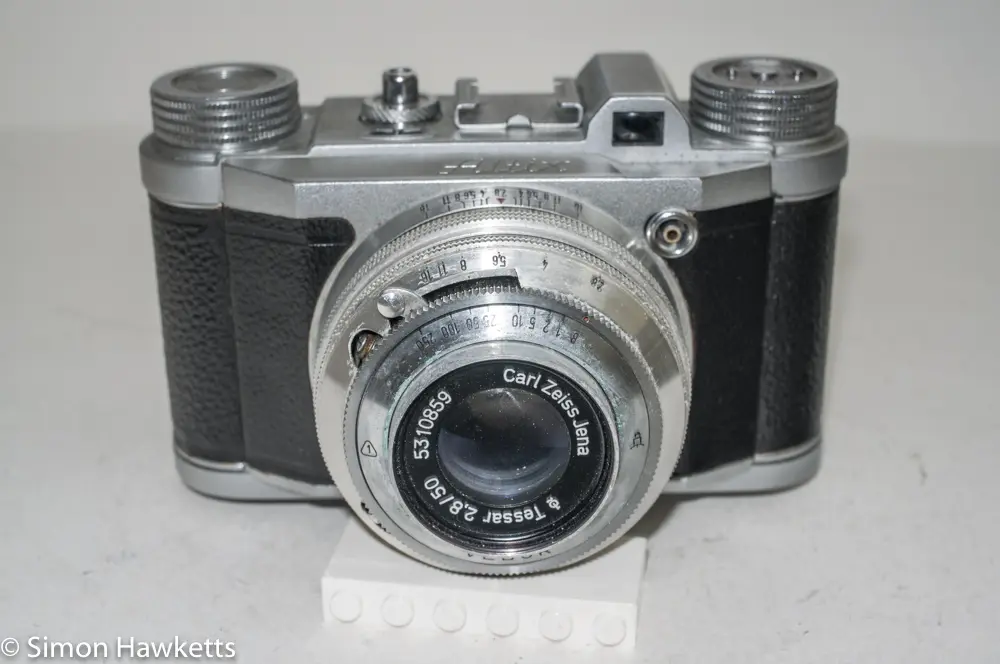
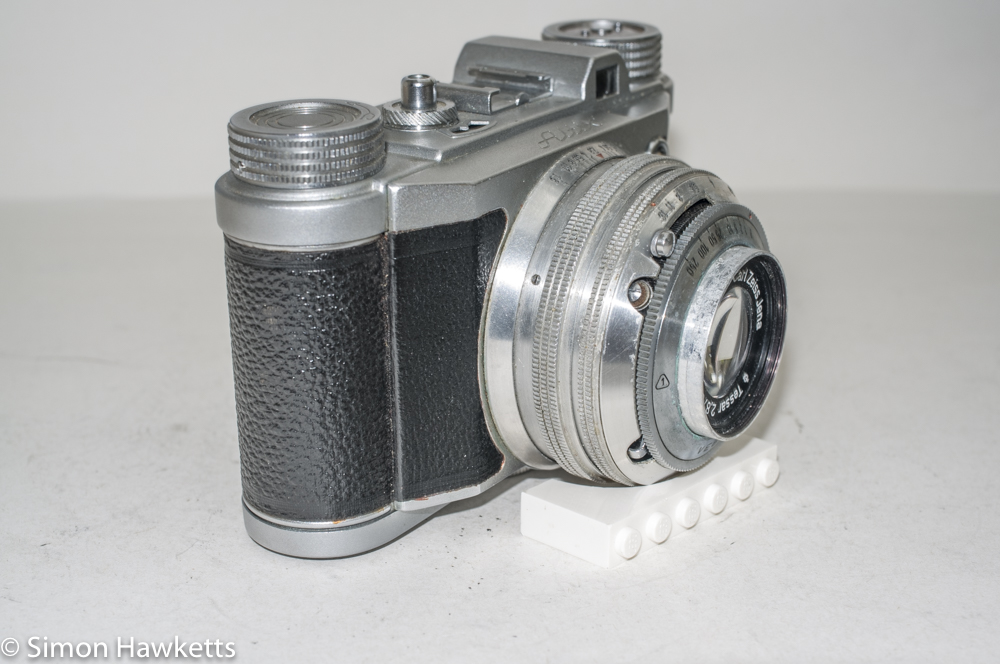
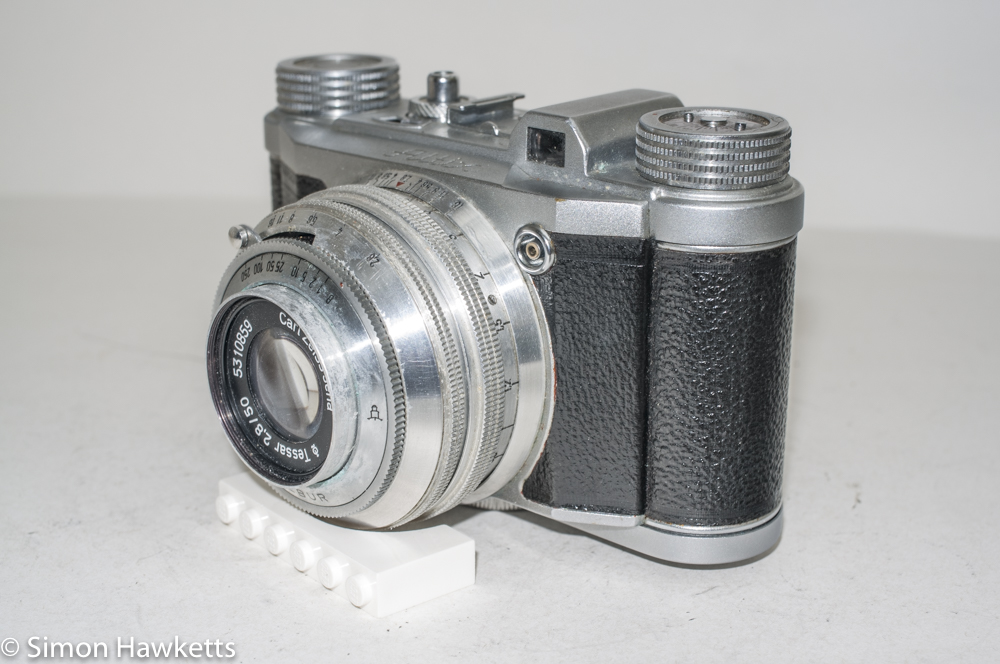
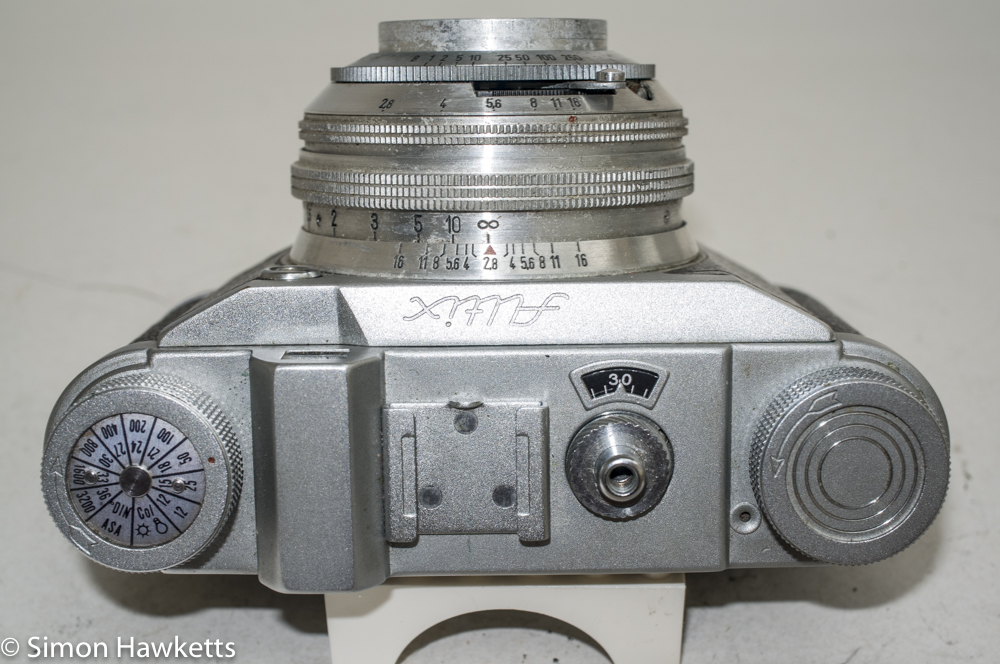
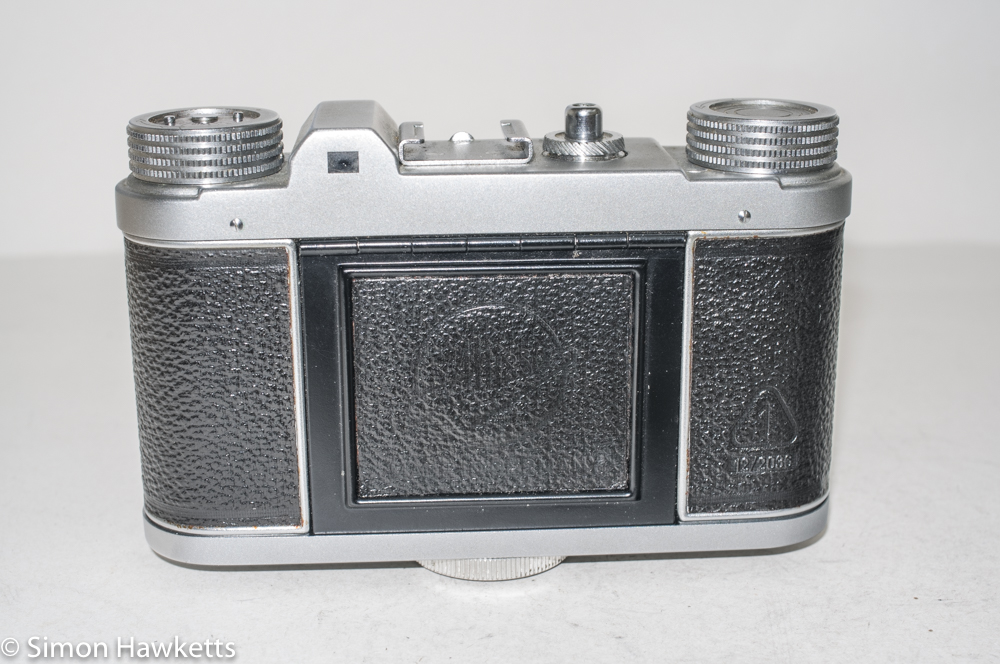
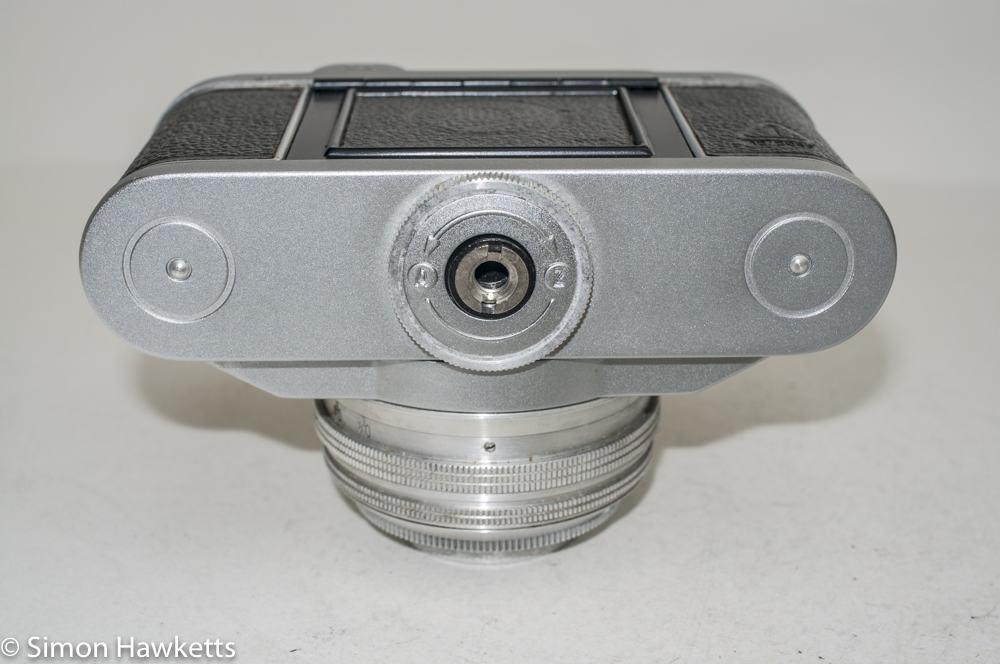
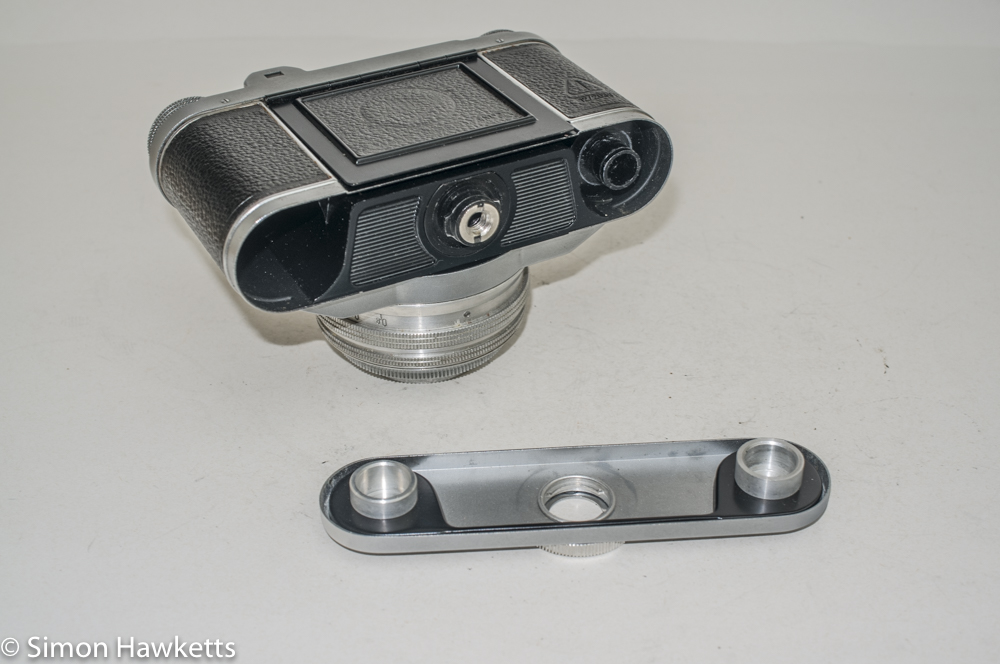
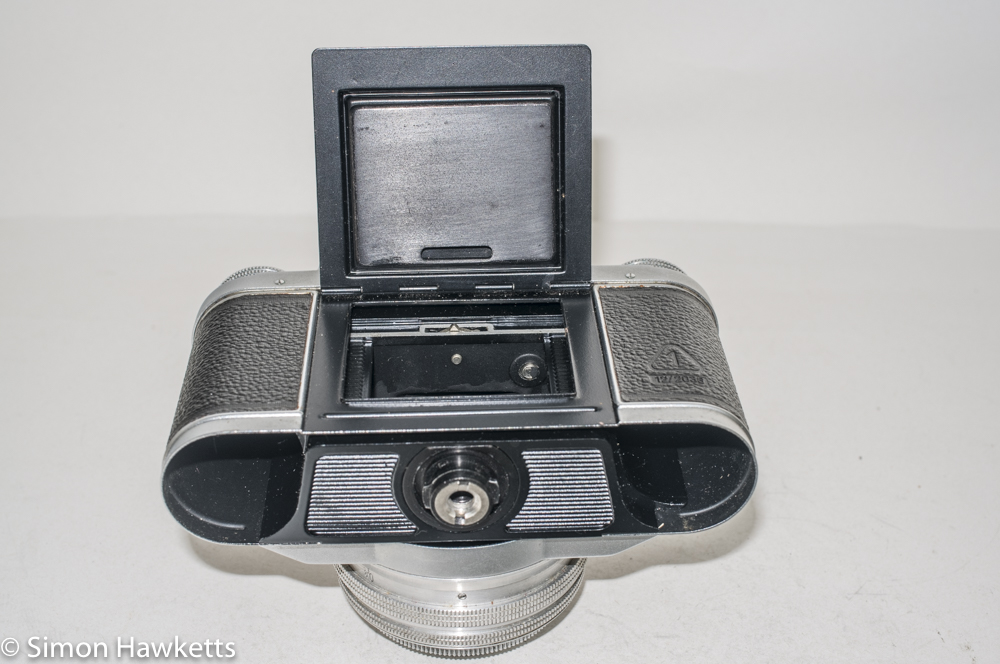
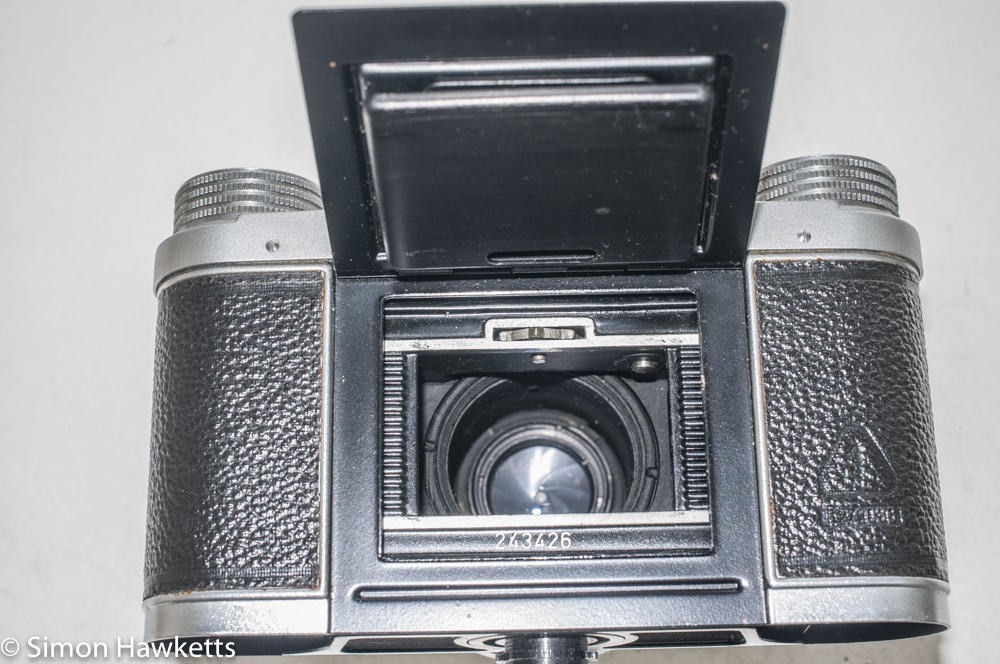
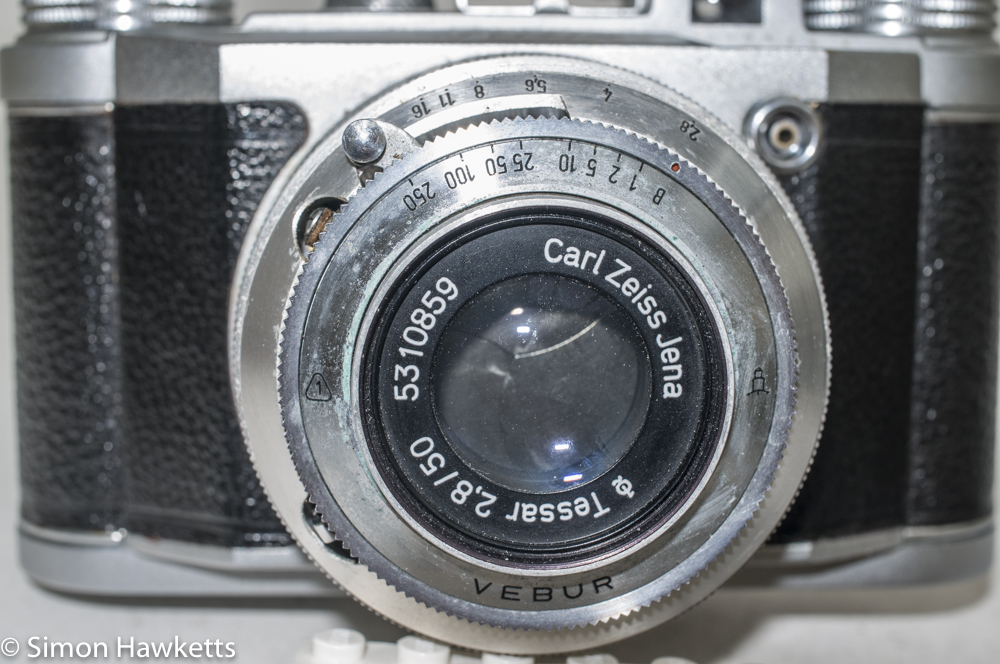
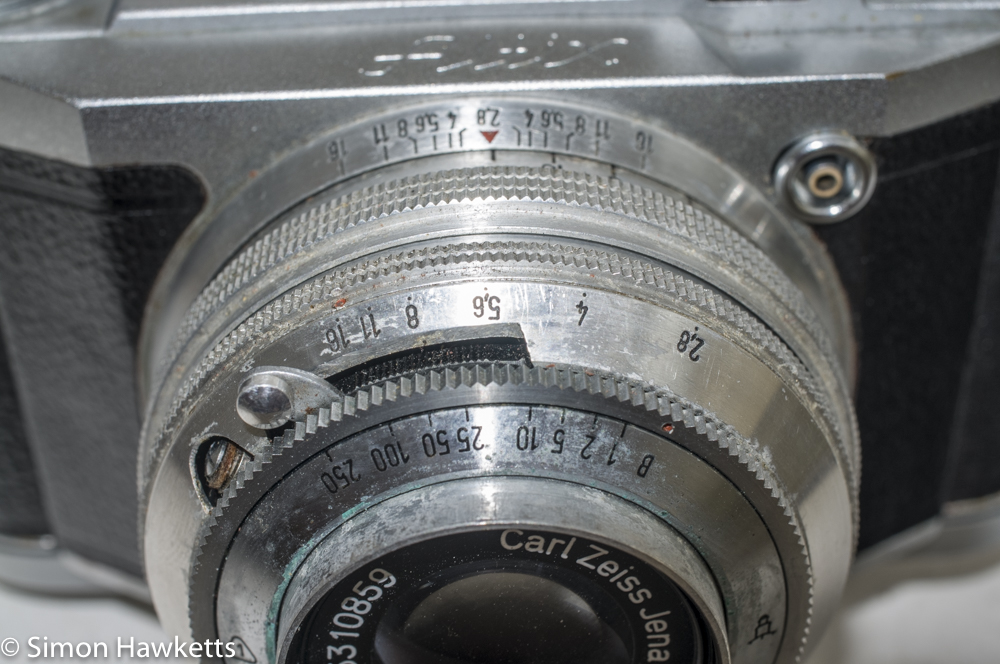
Altissa Altix IV Description
The Altissa Altix IV is probably what would be described as a miniature camera. It is similar in size to the Agfa Karat, although without the collapsible lens assembly.
I think it is an attractive camera, with the angled front section on which the lens assembly is mounted, and is reasonably light weight. I suspect a lot of the construction is of aluminium, although without further examination it’s difficult to be certain of that.
In operation, the camera is entirely manual including cocking the shutter which is not coupled to the film advance.
There is no light meter built in to the camera, so the photographer would need to carry a separate unit or be masterful in the art of Sunny 16, and also be good at judging distance since the focus is also entirely manual. Mind you, I think the fact that modern cameras have these features has just lead to us not being able to make judgement calls on these things when photographers of the day could – I well remember my father being able to set focus simply by looking at how far away the subject was, and I suspect with practice we could also do it.
For me, the stand-out ‘feature’ of the Altissa Altix IV camera is the weird way the film is loaded. It is normal for cameras of this age to either have a back which hinges at the side and swings out or possibly have a back that completely removes, giving access to the film chamber. The Altix does neither of these, or possibly both, depending on how you view it.
The way the film loading works is like this:
- Remove the bottom of the camera by unscrewing the large knurled knob.
- With the bottom removed, lift the flap on the back of the camera to expose the sprocket wheel at the top of the film chamber.
- In the side of the camera where the film advance knob is fitted, there is an empty reel which is used to pull the film. This needs to be positioned half out of the camera, and a new roll of 35 mm film positioned in the void on the other side.
- The film is fitted into the slot in the take-up spool and fed into the slot along the back of the camera.
- The film then needs to be pushed into the camera, fitted onto the sprocket and checked to make sure the two spools are correctly aligned with the camera advance and rewind controls.
- Once everything is correctly positioned, the flap is closed and the bottom put back on the camera.
- The film is advanced a couple of frames and the counter set.
That all sounds quite complex for something which needs to be done reasonably regularly (although admittedly I haven’t tried it yet)!
A couple of other features which I find a bit annoying on this camera are the tiny viewfinder, and the large locking knob on the bottom of the camera, which means it won’t sit flat on a surface.
So, those negative points aside, is there anything I like about the camera? Well, oddly there is.
I think the overall level of engineering is very good. The camera feels nice in the hand and, being quite small, would be quite convenient to carry around with you. Although this model is a fixed lens camera, the lens fitted promises to be a good performer, and there are some nice little plus points like the usefully located frame counter on the top plate and the neat little indicator next to the film advance which changes to red when the camera is ready to fire.
I may very well test out the lens with a roll of FP4 – that is, if I can successfully load it into the camera!
Altissa Altix IV Specifications
- Altissa Altix 35 mm viewfinder camera
- Small, compact design
- Manually cocked shutter
- Vebur shutter
- 1 sec to 1/250 sec + bulb speeds
- Flash sync socket
- Accessory shoe
- Manual focus
- Manually settable frame counter
- Film Type reminder
- Frame advance indicator next to advance control
- Film required in camera to prime shutter release lock
- Tripod bush
- Carl Zeiss Jena Tessar 50 mm f/2.8 lens
- Serial No: body – 24426, lens – 5310859
- Manual available on-line here
Discover more from Everything Vintage
Subscribe to get the latest posts sent to your email.

